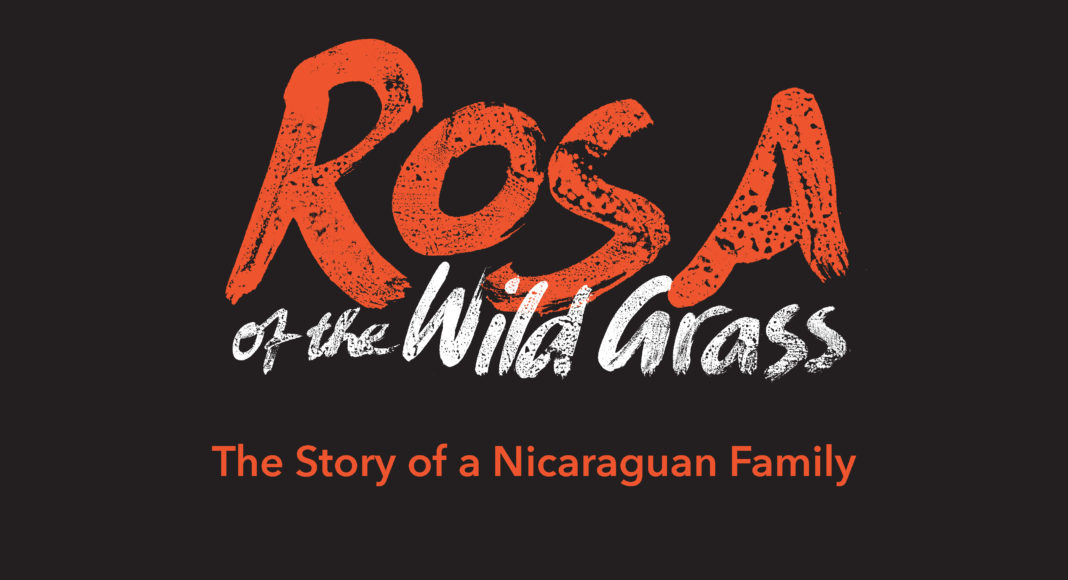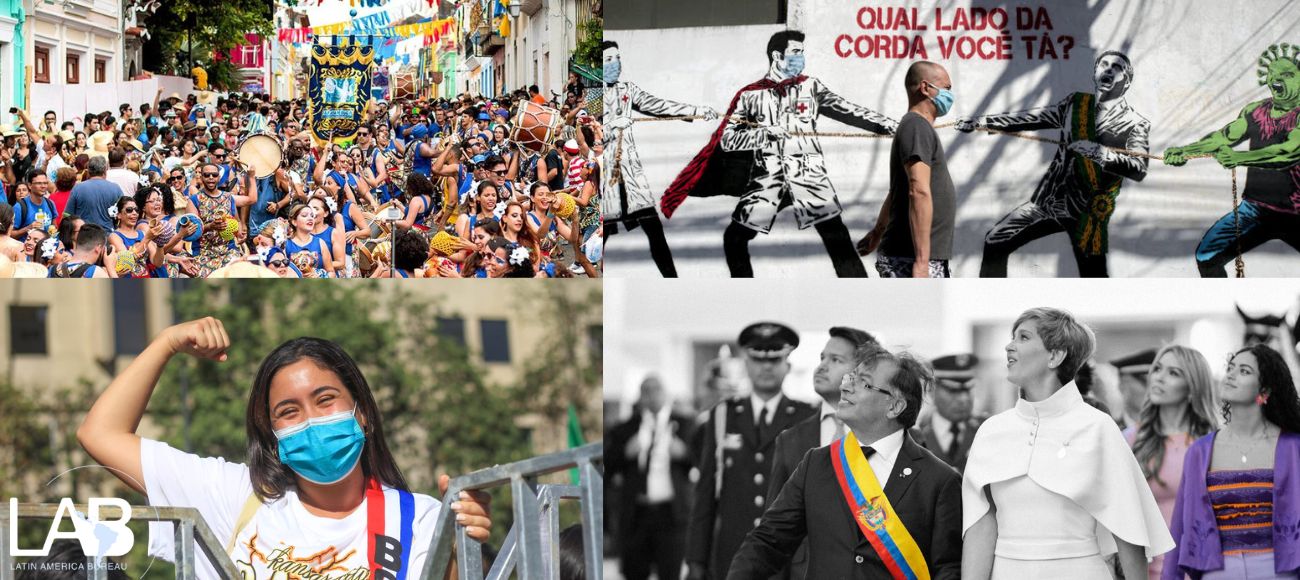A poignant, gripping, sensitive tale — Noam ChomskySince the launch by LAB in April last year of Rosa of the Wild Grass — The Story of a Nicaraguan Family, the book has gone on an incredible journey, its twists and turns keenly followed by Rosa and her family in Nicaragua. They are so relieved to know their story is now available and being read. It has taken more than 28 years. I started recording conversations with Rosa and her mother in 1987, and what they and her family told me over the years became an unique chronicle of survival through conflict, of trauma and of recovery through community spirit and action. The April 2016 launch in London was a great celebration. What stayed with me was how many people were particularly taken by the book’s illustrations. Over the years of working on the book I had painted the images almost compulsively, in response both to the families’ experiences, and my own. It was a designer pal of mine who saw their potential as a video which then was developed by six other friends into the impressive You Tube video Rosa of the Wild Grass.
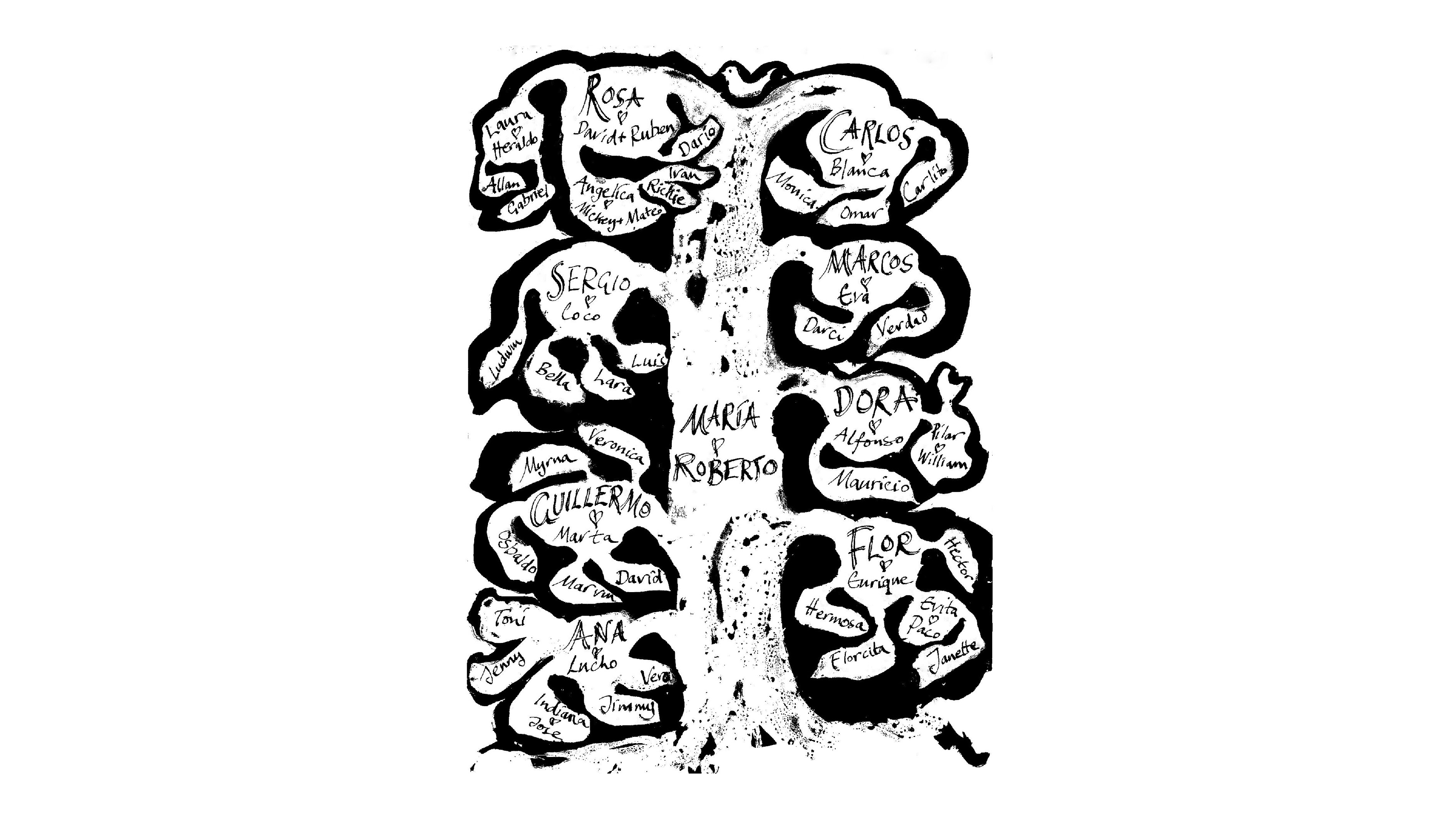 Soon after the launch I headed off to Nicaragua to find Rosa and her family at home in La Concha. They now had their own copies of the book and we spent our time together, as old friends do, with a lot of talking. While in Nicaragua I also gave readings to English-speaking audiences, which put me in good stead for what followed.
On return, I was invited to give readings at the Scottish International Storytelling Festival and at an Edinburgh bookshop, Word Power. I found each time that I was reliving what I was reading, whether at a gathering organised by Leeds town twinning group (twinned with with La Concha) or at Sheffield’s ‘Off The Shelf’ Book Festival. While people often knew little about Nicaragua, they certainly related to Rosa. From giving readings at the Glasgow Women’s Library, or in my town of West Kilbride, to recently at the Irvine Tidelines Book Festival, all have been welcoming, lively events.
Soon after the launch I headed off to Nicaragua to find Rosa and her family at home in La Concha. They now had their own copies of the book and we spent our time together, as old friends do, with a lot of talking. While in Nicaragua I also gave readings to English-speaking audiences, which put me in good stead for what followed.
On return, I was invited to give readings at the Scottish International Storytelling Festival and at an Edinburgh bookshop, Word Power. I found each time that I was reliving what I was reading, whether at a gathering organised by Leeds town twinning group (twinned with with La Concha) or at Sheffield’s ‘Off The Shelf’ Book Festival. While people often knew little about Nicaragua, they certainly related to Rosa. From giving readings at the Glasgow Women’s Library, or in my town of West Kilbride, to recently at the Irvine Tidelines Book Festival, all have been welcoming, lively events.
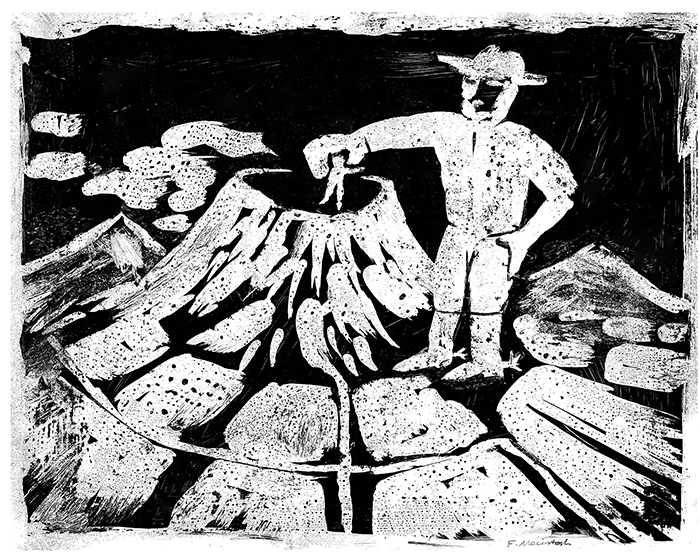 Remembering what friends had said at the book launch, I offered my nearby Irvine Harbour Arts Centre an exhibition of the images to be shown printed large on linen hangings with others as smaller prints.
Alongside this, I wanted to build on the book’s central theme of community and offered local St. Matthews Academy some workshops before the show went up. Here I read relevant passages to 12- year-olds. Referring to how I had drawn my illustrations in response to Rosa’s stories, I encouraged the pupils to doodle while I read, and this worked; their spontaneous markings being then transferred onto a large banner to become a brilliantly colourful painting about Rosa’s barrio integrated with images about their own communities. Their collective artwork then became part of the exhibition that ran from May to June this year.
Remembering what friends had said at the book launch, I offered my nearby Irvine Harbour Arts Centre an exhibition of the images to be shown printed large on linen hangings with others as smaller prints.
Alongside this, I wanted to build on the book’s central theme of community and offered local St. Matthews Academy some workshops before the show went up. Here I read relevant passages to 12- year-olds. Referring to how I had drawn my illustrations in response to Rosa’s stories, I encouraged the pupils to doodle while I read, and this worked; their spontaneous markings being then transferred onto a large banner to become a brilliantly colourful painting about Rosa’s barrio integrated with images about their own communities. Their collective artwork then became part of the exhibition that ran from May to June this year.
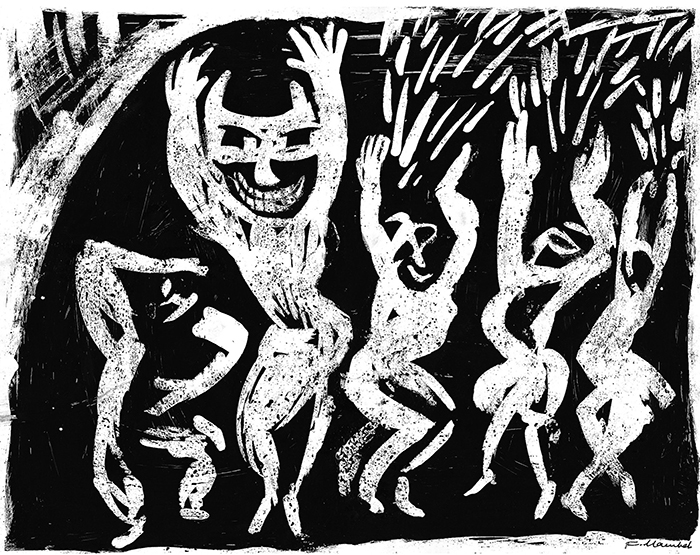 Along the same lines, I held another workshop during the exhibition for participants to paint and draw while listening to emotionally contrasting passages. Their art works were vividly full of energy, and what everyone attending commented on was how by making art they could feel much more engaged with Rosa than if they had been only listening.
When the exhibition came down, I wondered if the fabric hangings might find another venue in Glasgow and visited the main galleries with such a proposal. Within the week I had an offer of an exhibition in the vast space of the Briggait, once the fish market in the centre of town, and now the home to Glasgow’s WASPS artists’ studios. This main hall is the perfect place to see these fabric hangings. For this show I have again linked-up with a local group, this time, artists at Project Ability studios with the intent to explore their ideas about communities. Their final artworks about this will be integrated within the exhibition I have called, My home is your home, mi casa es su casa. It will run from 27 November to 26 January next year.
Along the same lines, I held another workshop during the exhibition for participants to paint and draw while listening to emotionally contrasting passages. Their art works were vividly full of energy, and what everyone attending commented on was how by making art they could feel much more engaged with Rosa than if they had been only listening.
When the exhibition came down, I wondered if the fabric hangings might find another venue in Glasgow and visited the main galleries with such a proposal. Within the week I had an offer of an exhibition in the vast space of the Briggait, once the fish market in the centre of town, and now the home to Glasgow’s WASPS artists’ studios. This main hall is the perfect place to see these fabric hangings. For this show I have again linked-up with a local group, this time, artists at Project Ability studios with the intent to explore their ideas about communities. Their final artworks about this will be integrated within the exhibition I have called, My home is your home, mi casa es su casa. It will run from 27 November to 26 January next year.
Click here To order copies of the book and here to view other news of Rosa and its progress.

